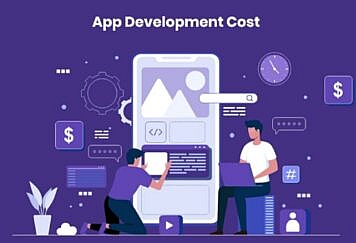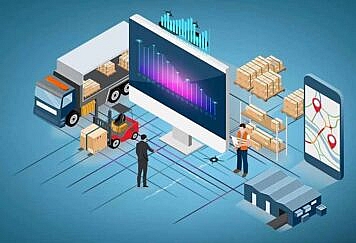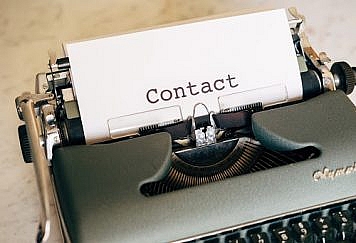You don’t necessarily think of your doctor or nurse as being a tech wiz. And yet, their profession sits at the forefront of a breakthrough in digital technology. AI-generated medical solutions have the potential to improve patient outcomes and generally expedite the way that the healthcare industry operates.
In this article, we talk about what technologies are out there, and how they might influence the future of patient outcomes.
What Does AI mean in the Context of Healthcare?
AI implementation in healthcare is usually used as a tool rather than a substitution. In finance, for example, AI can handle the entire workload of positions that used to be full—time careers. In healthcare, it’s less comprehensive.
Doctors and nurses use algorithms and pattern recognition to speed up what they were already doing. From patient monitoring to diagnostics, it’s there to make things a little easier for healthcare professionals and the patients they serve.
Patient Monitoring
Cardiac floor. Patient Sue is in room 105. Stretching down the hallway are twenty other patients just like her. People who wound up where they were after what the doctors described as a “cardiac event.”
Any of their vitals could change at the drop of a hat. Brad and his nursing compatriots are attentive, but it gets a little harder when the patients are sleeping. They can’t call out for help. They might not even notice that anything was going on until serious damage has already been done.
Brad is down the hall when he gets the alert on his remote monitoring device. Sue’s vitals have plummeted. He’s in the room in seconds, along with two other nurses.
Remote patient monitoring makes it so much easier for several doctors and nurses to take care of many more patients.
In the hospital, it makes it easy to analyze and prioritize exactly what needs to be done. Brad can view everyone’s vitals and respond to his patient’s needs accordingly.
Remote monitoring is also possible in outpatient care. Heart monitors. Glucose monitors. Devices that are constantly taking information that once could only be accessed at the hospital.
AI monitors the patient’s vitals and can even send out life alerts if it detects a bad reading. For example, diabetics might depend on their glucose monitors while they are sleeping. If their levels get too low during the night, it could mean serious health consequences. An AI-infused monitor can send alerts to emergency contacts, and even the doctor who issued the device, to make sure help is provided if they need it.
Patient Patterns
AI is all about recognizing patterns. In the context of hospital care, this means evaluating what types of people have the best outcomes. Healthcare algorithms driven by AI can help nurses recognize what patients are most likely to experience infections. Which will respond best to treatment X over treatment Y.
Pattern recognition doesn’t take accountability away from the healthcare professional. They still need to think critically about the situation to deliver care best suited to their patients.
It does, however, add speed to the decision-making process. Instead of considering ten possibilities, good AI can help doctors and nurses narrow it down to two or three.
Resource Management
During the height of the pandemic, hospitals had two huge problems:
- An enormous patient volume. Dozens, sometimes even hundreds of people all come in to have the same symptoms treated. Hospitals aren’t built for that level of influx.
- Staffing shortages. Some people left the healthcare profession in response to Covid. Most who stayed got sidelined at some point with a mandatory quarantine for Covid exposure.
More patients and fewer people to treat them is a crippling dynamic. We know that a perfect solution was never discovered. Hospitals struggled. AI, however, did help make the situation slightly more manageable.
It helped prioritize patient care. Plan the schedule to get the most out of what labor was available. Anticipate surges. In short, make the most of what limited resources there were.
The worst of the pandemic is well behind us. However, the healthcare system still uses AI to anticipate what will happen next and make plans accordingly. For example, when your doctor tells you in September that we are heading into a rough flu season, they might be relying on AI-driven intel to make that determination.
The Future of AI in Healthcare
It’s important to keep in mind that AI in its current form is a very new technology. One that makes exponential progress— each new development paving the way for the next. We are at a good place with AI, but the next several years will be even more exciting.
AI is in the early stages of being able to make diagnoses almost entirely independent of doctors. Put in symptoms, and algorithms can now generate a short list of possible culprits.
It can even interpret mammograms. A recent study showed that an AI-driven mammogram is significantly faster than the traditional method and boasts a 90% accuracy rating making it quicker and more accurate than human beings.
This is all great for doctors and nurses who currently find themselves in the position of trying to get a lot done with limited resources. It’s also a big boon for patients. If you’ve ever had to wait on an important test like a mammogram, you understand how agonizing the process can be.
Quicker results mean quicker intervention, making it easier for people to get the life-saving care they need in almost real-time.
Follow TechStrange for more Technology, Business, and Digital Marketing News.





